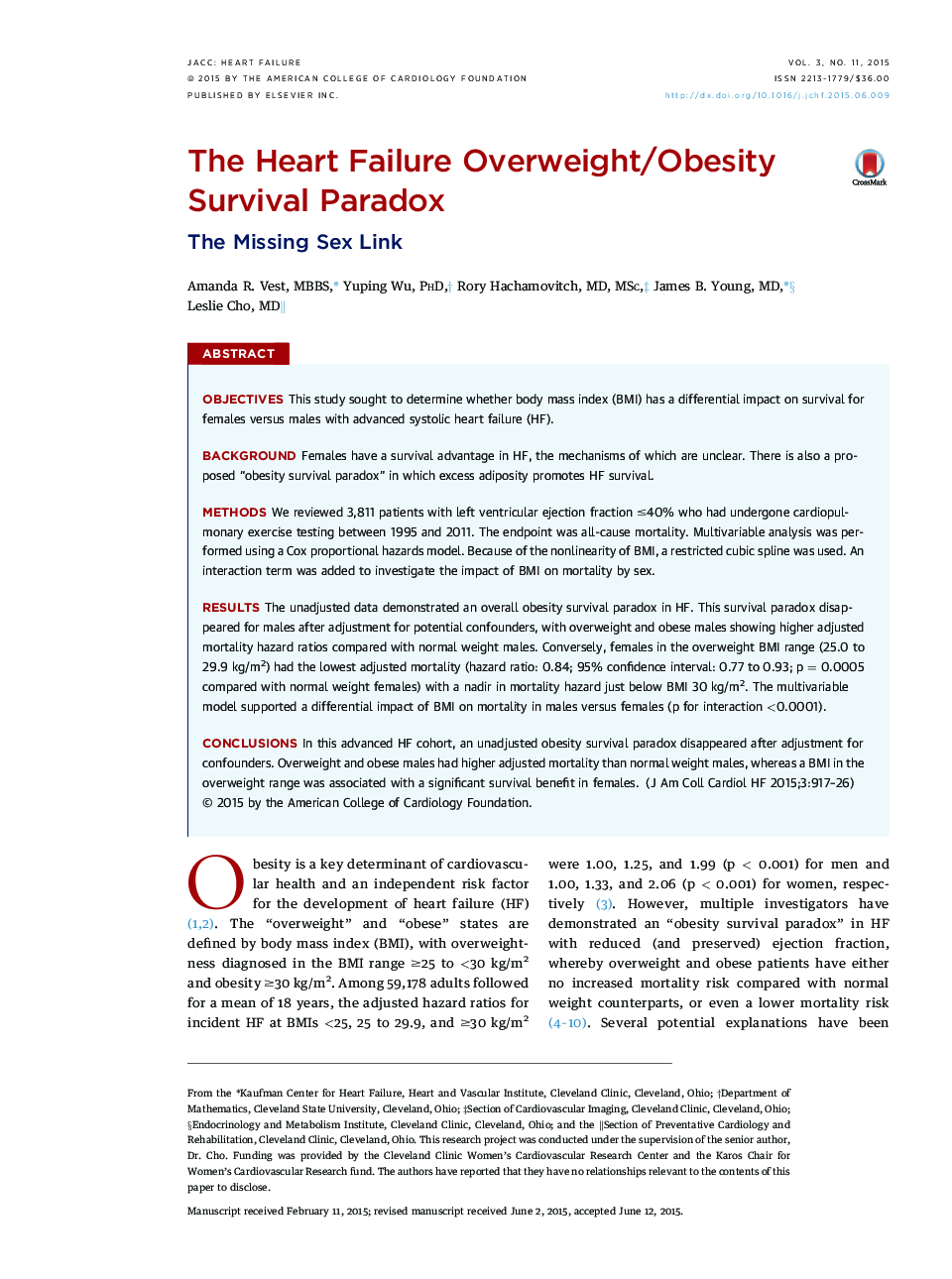| Article ID | Journal | Published Year | Pages | File Type |
|---|---|---|---|---|
| 2942586 | JACC: Heart Failure | 2015 | 10 Pages |
ObjectivesThis study sought to determine whether body mass index (BMI) has a differential impact on survival for females versus males with advanced systolic heart failure (HF).BackgroundFemales have a survival advantage in HF, the mechanisms of which are unclear. There is also a proposed “obesity survival paradox” in which excess adiposity promotes HF survival.MethodsWe reviewed 3,811 patients with left ventricular ejection fraction ≤40% who had undergone cardiopulmonary exercise testing between 1995 and 2011. The endpoint was all-cause mortality. Multivariable analysis was performed using a Cox proportional hazards model. Because of the nonlinearity of BMI, a restricted cubic spline was used. An interaction term was added to investigate the impact of BMI on mortality by sex.ResultsThe unadjusted data demonstrated an overall obesity survival paradox in HF. This survival paradox disappeared for males after adjustment for potential confounders, with overweight and obese males showing higher adjusted mortality hazard ratios compared with normal weight males. Conversely, females in the overweight BMI range (25.0 to 29.9 kg/m2) had the lowest adjusted mortality (hazard ratio: 0.84; 95% confidence interval: 0.77 to 0.93; p = 0.0005 compared with normal weight females) with a nadir in mortality hazard just below BMI 30 kg/m2. The multivariable model supported a differential impact of BMI on mortality in males versus females (p for interaction <0.0001).ConclusionsIn this advanced HF cohort, an unadjusted obesity survival paradox disappeared after adjustment for confounders. Overweight and obese males had higher adjusted mortality than normal weight males, whereas a BMI in the overweight range was associated with a significant survival benefit in females.
